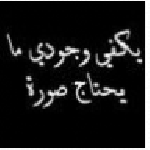
جامعة الاقصى
|
|
| | مين معاه شعر |  |
|
+6خديجة ديالا فلسطين لولوة **غريبة الناس** بنت جامعة الأقصى اشواك ناعمة 10 مشترك | |
| كاتب الموضوع | رسالة |
|---|
اشواك ناعمة
حائز على وسام الابداع



عدد الرسائل : 2752
العمر : 36
التخصص : تعليم اللغة الانجليزية
بلدي : 

احترام قوانين الملتقى : 
المرح يجمعنا : 

تاريخ التسجيل : 29/03/2008
 |  موضوع: مين معاه شعر موضوع: مين معاه شعر  الأربعاء ديسمبر 09, 2009 5:01 am الأربعاء ديسمبر 09, 2009 5:01 am | |
| تذكير بمساهمة فاتح الموضوع :
اللى معاه شعر يا ريت يساعدنى او اللى خدها قيل هيك مع الدكتور اسعيد
ويقولنا كيف اسئلته ويا ريت لو يحطنا هنا شويى
ومشكورين
| |
|   | |
| كاتب الموضوع | رسالة |
|---|
اشواك ناعمة
حائز على وسام الابداع



عدد الرسائل : 2752
العمر : 36
التخصص : تعليم اللغة الانجليزية
بلدي : 

احترام قوانين الملتقى : 
المرح يجمعنا : 

تاريخ التسجيل : 29/03/2008
 |  موضوع: رد: مين معاه شعر موضوع: رد: مين معاه شعر  الإثنين ديسمبر 14, 2009 6:27 am الإثنين ديسمبر 14, 2009 6:27 am | |
| The Canonization
From: utsp@windowslive.com
Subject: “The Canonization”
Date: Sun, 22 Nov 2009 19:36:42 +0000
.ExternalClass .ecxhmmessage P
{padding:0px;}
.ExternalClass body.ecxhmmessage
{font-size:10pt;font-family:Verdana;}
The forty-five lines of John Donne’s “The Canonization” are divided into five nine-line stanzas, a form that suggests a five-act play. The title reflects the speaker’s conviction that in opposing the claims of the world (business, courtly ambitions), he and his beloved have become love’s martyrs, and therefore saints.
The first-person speaker appears to be addressing an outsider who is unsympathetic to his romantic involvement and who has said as much prior to the first line. The poem, then, is a type of dramatic monologue, in which the speaker defends and later celebrates his love against the outsider’s objection. In the first stanza, he commands the outsider to hold his tongue and tells him to scold him about being too old for love if he wishes, but not about being in love. He suggests that the outsider pursue his own ambitions or do whatever he likes, so long as he leaves him alone to love.
In the second stanza, the speaker adopts a defensive tone, arguing that no one is “injured” by his love, as the outsider may have charged. Donne employs several conventional Petrarchan metaphors (poetic clichés by that time), insisting that his lover’s sighs have not sunk any merchant ships, nor has his heated passion caused an early spring to be delayed. He concludes that argumentative soldiers and lawyers can still bicker even though he finds contentment in love.
In the third stanza, the speaker reacts to apparent name-calling on the part of the outsider, insisting that he and his beloved are “flies” (in the diction of his age, moths or butterflies) or “tapers” (candles), which gain fullness of life even as they consume themselves. (Renaissance English poets commonly employed the word “die” as a sexual pun, based on the folk belief that each orgasm shortened one’s life by a day.) Likening the physically and spiritually united lovers to the phoenix, a mythical bird that was thought to erupt into flame and then be resurrected from its own ashes, the speaker claims that they are proven “mysterious” (in the spiritual sense) by this ideal love. This constitutes the climax or turning point of this small drama.
In the fourth stanza the speaker explains that if they do literally die from their love, it will be a martyrdom, and their saints’ legend will be an appropriate subject for poetry (as this poem itself proves), so they will also live because of their love. He expands his point metaphorically by suggesting that if their love is not suitable for chronicles, it will do for sonnets, and that a carefully made funeral urn is as suitable for famous personages as “half-acre tombs” like the pyramids.
The last stanza amounts to an imagined prayer of intercession. In short, the busy world will request a “pattern” or model of ideal love from these martyrs, who have found in each other a peaceful “hermitage.”
Forms and Devices
This poem is a triumph in the “complex stanza” form, which derives from the classical ode and which requires that the poet contrive a fresh rhyme scheme (abbaccca in the present case) and use a variable line length as well. Donne employs a free iambic foot and a meter that varies from pentameter (ten syllables per line) in the first, third, fourth, and seventh lines to trimeter (six syllables) in the last line of each stanza. The remaining lines are in tetrameter (eight syllables). Donne frames each stanza by closing off the first and ninth lines with the word “love,” which accordingly echoes throughout the poem.
Within the formal structure, Donne uses frequent balance and antithesis (as in line 2, in which “my palsy” is balanced with “my gout”). Occasionally this binary pattern, which operates throughout the poem, leads to paradox, for the speaker argues that the apparent dangers of passionate love actually sustain life in the best sense. The paradoxical pairing of the lover’s “colds” (chills) and “heats” (fevers) in the second stanza are conventional and even somewhat playful, but the pairing of dying and rising later in the poem is more profound. Antitheses abound in the poem: chronicles/sonnets, well-wrought urn/half-acre tombs, peace/rage. These tend to counter the more obviously balanced pairs in the first stanza: “With wealth your state”/ “your mind with arts,” a course/a place (in court, presumably), His Honor/ His Grace, “the King’s real”/ “or his stamped face” (on a coin).
The metaphorical play in this poem can be confusing to those who are unaware of the traditions and conventions of Renaissance poetry. The typical Petrarchan lover, for example, who is teased in the second stanza, was pictured as an unfortunate man who was spurned by his mistress and who consequently sighed up a storm, wept floods, and alternately suffered chills and fevers. Donne’s lover is beloved in turn, so he does not suffer such maladies.
Donne draws on the emblem tradition for conventional metaphors in the second stanza. Emblem books in that era provided woodcuts or engravings that had moralizing mottoes and poems. The moth drawn to a deadly candle was one such emblem, as was the image of the eagle (representing physical power, often that of the male) and the dove (representing peace or spirituality). The phoenix was also a popular emblem.
Donne concludes his poem with a metaphor in which the lovers, staring into each other’s eyes, reflect themselves and indeed the whole world, as represented by “Countries, towns, courts.” They become, then, the epitome or summation of the universe.
Themes and Meanings
“The Canonization” argues for the superiority of love’s unifying and reconciling potential over the divisive and antagonistic impulses of the ordinary world. In pursuing personal ambitions in business or at court, people like the imagined outsider and courtiers, soldiers, and lawyers trade serenity for strife. The speaker argues that an ideal love, which is both physical and spiritual, can provide a paradigm for the confused world, and he asserts that this poem proves his point.
The reference to the king in the first stanza causes some scholars to associate the poem with the accession of James I in 1604. Only three years earlier, Donne had put a disastrous halt to his own courtly ambitions when he eloped with Ann More, the ward of his employer, Sir Thomas Egerton, Lord Keeper of the Seal. Ann More’s father had Donne blackballed, in effect, and the couple experienced severe financial strain for several years. This poem might be seen, then, as an explanation or even a justification of his apparently impulsive behavior.
If his intended audience for the poem was King James himself, Donne’s appeal must have fallen on deaf ears, since another ten years were to pass before his fortunes improved. The marriage was apparently a happy one, however, and Ann Donne was to bear nine children before her death in 1617. John Donne did not remarry.
Best Regards
Dr.Hussam
| |
|   | | اشواك ناعمة
حائز على وسام الابداع



عدد الرسائل : 2752
العمر : 36
التخصص : تعليم اللغة الانجليزية
بلدي : 

احترام قوانين الملتقى : 
المرح يجمعنا : 

تاريخ التسجيل : 29/03/2008
 |  موضوع: رد: مين معاه شعر موضوع: رد: مين معاه شعر  الإثنين ديسمبر 14, 2009 6:32 am الإثنين ديسمبر 14, 2009 6:32 am | |
| I Wandered Lonely as a CloudThe Poem
I Wandered Lonely as a Cloud” resulted from an experience of William Wordsworth and his sister Dorothy while on a walking tour of the Ullswater region in April, 1802. Dorothy wrote of it at length in her journal; when the poet began to compose the present poem two years later, his wife Mary Hutchinson Wordsworth contributed what are now lines 21-22, which William correctly identified as the best two in the poem. While rearranging his works for an 1815 publication, Wordsworth added the second stanza. As it presently stands, this poem is reputed to be the most anthologized poem in the world.
The “I” of the poem is explicitly a poet (line 15); the implied “you” is therefore explicitly a reader of a poem. Such clear roles doubtless add to the poem’s illusion of simplicity.
The final stanza confers poetic meaning upon the experience of the previous three descriptive and narrative stanzas. In his famous preface to the second edition of Lyrical Ballads (1800), Wordsworth said that poetry results from “emotion recollected in tranquillity,” and in the fourth stanza the poet, in tranquillity, recollects an earlier experience and sees more deeply into it. Suddenly the poem’s simplicity is complicated by the addition of an explicit program: Wordsworth is exemplifying his contention that the events and emotions of the first three stanzas must recur in an altered mode of existence, neither in nature nor in history but in memory, if they are to occasion a poem.
Returning to the beginning of the poem, one finds the poet hiking on a windy day. He has no set destination. Happening upon innumerable wild daffodils, he compares them to a crowd of people and to an army (“host” implies that the flowers are the heavenly army of the divinity). He compares the densely packed flowers to the stars in the Milky Way and to a multitude of dancers engaged in a spirited dance. This stanza, added in 1815, balances the original event more evenly between isolated subject (“I”) and communal object (daffodils) by concentrating on the external scene. The other three stanzas rely heavily on the first-person singular.
The poet had enjoyed the event even while he experienced it, but in later years, when he is more mature, he comments that at the earlier time he had not recognized its full value. In the final six lines, the poet moves into the present tense, using the key Wordsworthian word “oft” to generalize about the reiterated and enduring effects of recollection. The word “vacant” usually connotes for Wordsworth positive things such as vacations. “Pensive,” by contrast, implies melancholy, the serious, gloomy, earthbound humor among the four humors; but it mainly serves as a dark foil to set off the bright and joyful conclusion.
Forms and Devices
The poem contains four six-line stanzas of iambic tetrameter, rhyming ababcc. The usual metrical substitutions (trochee or anapest for iamb) are very sparingly used. Wind characterized the original experience. Dorothy Wordsworth made it a strong unifying motif of her journal entry. It endured while her brother deleted and altered other particulars, and it continues to unify the reader’s experience of the poem.
The wind enhances almost every visual aspect of this highly visual poem. The visual words that imply movement—“fluttering,” “dancing,” “shine,” and “sparkling”—all imply the motion imparted by the wind. The Milky Way stars even “twinkle” because of the instability of the upper air. The one visual image that suggests no motion, “golden,” perhaps devalues literal material wealth in favor of the aesthetic wealth of the last eight lines.
The wind also occasions the poem’s powerful kinesthetic images—images of the tactile sensation of one’s own motion or empathy with another’s. The first three forms of a key word—“dancing,” “dance,” and “danced”—literally name the wind’s past effects, and the fourth, “dances,” names the continuing effect of remembering the past wind; “flash” does the same. Even more important, the wind unites the many individual flowers, waves, or stars by making them perform together some single action; they are not a multitude of separate and isolated beings, for although they are originally perceived merely as “a crowd,/ A host,” they soon form a community.
As such they can be company for the lonely poet: Since he was a cloud at the beginning of the poem, he was also subject to the wind’s motion. The wind has brought him to the destined meeting. His condition at the end of the poem involves no literal wind but, instead, the psychological results of the original experience: Emotion-charged memory is the psychic wind that often blows the poet and the daffodils together again. Moreover, the poet relives the experience so much more deeply in later years that this psychic wind sets his heart dancing with his old friends the daffodils, even though he had not danced with them during the original encounter.
The three main groups—daffodils, waves, and stars—both as they were and as they are remembered, create some correlatives that make the poem applicable to vast ranges of space and time: as below (daffodils), so above (stars); as on sea (waves), so on land (daffodils); as in day (waves and daffodils), so at night (stars); as in the past (daffodils, waves, and stars), so in the present (they and their associated emotions when recollected in tranquillity).
Themes and Meanings
One can conjecture that the earthbound melancholy of the poet’s pensive mood (line 20) is transformed into its opposite, the sensual, cheerful sanguine humor which is associated with the element air. As fire and choler are the opposites of water and the phlegmatic humor, so air and the sanguine humor are the opposites of earth and melancholy. Since air (wind) and water (waves) are so prominent in the poem, one finds oneself with another Garden of Eden built of the same two elements that John Milton used to build his doomed Eden in Paradise Lost (1667, 1674). It is no accident that five lines near the start of the 1805 version of Wordsworth’s The Prelude (1850), written within a few months of “I Wandered Lonely as a Cloud,” subtly echo the final five lines of Milton’s Paradise Lost. At the end of Paradise Lost, Adam and Eve leave the Garden of Eden with the world “all before them”; providence is their guide as they take their “solitary way.” In The Prelude, Wordsworth writes that the “earth is all before me”; even if his guide is only “a wandering cloud,” he says, “I cannot miss my way.”
Wordsworth plainly anoints himself as the new Adam; two Eves, Dorothy and Mary, saunter with him into the new postlapsarian world of Romanticism. Not the Judaeo-Christian providence but Nature—or more precisely, the wind, as the holiest spirit remaining—will bring the poet who abandons himself to it to his daffodils, his destiny, for their sprightly (spirited, inspired) dance. During hours of apparently aimless sauntering, the wind will lead him away from melancholy into the sensual and sanguine Eden of a post-Christian, nearly pantheistic cosmos.
The reader might suspect “I Wandered Lonely as a Cloud” to be guilty of the “pathetic fallacy”—of attributing human emotions to subhuman things. Wordsworth’s pantheistic Nature, however, is poles apart from the totally demythologized nature of late nineteenth century naturalism, which has no traits of consciousness. Instead, it is an all-inclusive cosmic entity of which the attributes of any of its parts may be affirmed.
David Hartley, an influential British psychologist and philosopher in the eighteenth century, had a major impact on Wordsworth. In Hartley’s psychology (empirical associationalism), sensory data begin to associate and synthesize themselves within a passive and unreflective mind; the poet’s initial aimlessness in this poem probably reflects that childish condition. Wordsworth, who was no systematic thinker, supplemented Hartley with some transcendental intuitive idealism. The resulting self-contradictory jumble makes some sense in practice if one sees passivity as a program, aimless wandering as a conscious discipline, and memory as being extremely important to Wordsworth. Once Nature has impressed itself on the poet’s senses, especially by eliciting pleasure or pain, his memory and intuition continue to associate, unify, and refine the impressions long after the sensory objects that caused them have disappeared. In the sensitive mind, these products eventually flower into ideal forms, poetic ideas, and aesthetic emotions.
In “I Wandered Lonely as a Cloud,” then, a holy wind brings the poet to the place of meeting that Nature has appointed, Nature reveals itself to him through the daffodil host (as if the flowers are a multitude of angelic messengers of the divine), and the wind of Nature finally empowers the poet to utter his enduring inner experience.
Dr.Hussam | |
|   | | **غريبة الناس**
عسل الملتقى



عدد الرسائل : 5258
العمر : 35
التخصص : لغة انجليزية
السكن- المدينة : غزة
بلدي : 

احترام قوانين الملتقى : 
المهنة : 
المرح يجمعنا : 

تاريخ التسجيل : 04/09/2009
 |  موضوع: رد: مين معاه شعر موضوع: رد: مين معاه شعر  الإثنين ديسمبر 14, 2009 6:37 am الإثنين ديسمبر 14, 2009 6:37 am | |
| مشكووووووووورة اشواك الله يسعدك يارب والله انك عسل | |
|   | | اشواك ناعمة
حائز على وسام الابداع



عدد الرسائل : 2752
العمر : 36
التخصص : تعليم اللغة الانجليزية
بلدي : 

احترام قوانين الملتقى : 
المرح يجمعنا : 

تاريخ التسجيل : 29/03/2008
 |  موضوع: رد: مين معاه شعر موضوع: رد: مين معاه شعر  الإثنين ديسمبر 14, 2009 6:40 am الإثنين ديسمبر 14, 2009 6:40 am | |
| The Passionate Shepherd
Christopher Marlowe’s “The Passionate Shepherd to His Love” fits perfectly into the poetic genre of the period. Poets of the Elizabethan age used poetry as a way to express their wit and talent. It is likely that Marlowe’s poem would have been passed around among his friends long before its publication in 1599 in England, six years after the poet’s death. Few Elizabethan poets published their own work, especially one as young as Marlowe, and so it is fairly certain that the poem was well-known long before its publication. The composition date is thought to be about 1588, and probably it generated many responses well before its publication nearly a dozen years later. Among these responses was Sir Walter Raleigh’s “The Nymph’s Reply to the Shepherd” (date unknown, but thought to be about 1592), which provides the woman’s response to Marlowe’s shepherd. Marlowe’s poem also inspired several other notable works that were similar in tone and content, including John Donne’s “The Bait” (1633), which also relies upon wit and sexuality to entertain the reader.
“The Passionate Shepherd to His Love” is written in the pastoral tradition that originated with Theocritus in Greece during the third century b.c. The pastoral tradition is characterized by a state of contentment and of innocent and romantic love. Rural country folk are presented in an idealized natural setting, while they contemplate their perfect and peaceful world that is absent the worries and issues of crowded city life. As was common of Elizabethan poets, Marlowe plays with the traditional pastoral formula. He introduces sexuality and includes images that make the shepherd’s plea seem ridiculous rather than ideal.
The speaker in “The Passionate Shepherd to His Love” is a shepherd, who pledges to do the impossible if only the female object of his desires will accept his pleas. The poem is static in time, with no history or clearly defined future. Only the present matters. There is never any suggestion that the poet is asking the woman for a long-term commitment; there is no offer of marriage nor does he offer a long-term future together. Instead, he asks her to come and live with him and seek pleasure in the moment. The use of “passionate” in the title suggests strong emotions, but may also refer to an ardent desire to possess the woman sexually, since there is never any declaration of love. The shepherd makes a number of elaborate promises that are generally improbable and occasionally impossible. The woman’s response is never heard, and she is not present in any way except as the object of the shepherd’s desire.
Prior to the composition of “The Passionate Shepherd to His Love,” early English Renaissance poetry had been most concerned with romantic love. These poems, which included poems by Sir Thomas Wyatt and Henry Howard, were traditional love poems, characterized by the pleas of a rejected suitor who would find solace in the soothing atmosphere of country life. Marlowe tweaked the traditional, transforming it into a more dynamic piece. As a result, Marlowe’s poem remains a long lasting and important example of the Elizabethan poet’s talent. “The Passionate Shepherd to His Love” is included in most literature anthologies published for academic use, including the seventh edition of the Norton Anthology of English Literature.
The Passionate Shepherd to His Love Summary
Stanza 1: Lines 1–4
In the first stanza of “The Passionate Shepherd to His Love,” Marlowe’s speaker, an unidentified shepherd, pleads with an unidentified woman that if she will come and live with him, then all pleasures will be theirs for the taking. The shepherd opens with the invitation: “Come live with me, and be my love.” He is not asking her to marry him but only to live with him. The offer is simply put, and his ease in offering it implies that the woman should just as easily agree. However, since the shepherd is forced to continue with a succession of promises, the reader can assume that the shepherd’s initial offer was not well received.
The shepherd promises the woman pleasures they will experience in all of the pastoral settings that nature can supply. Since he promises that the couple will experience these pleasures in a variety of locations, it appears his expectation is that the pleasures of the world are principally sexual. He is asking the woman to live with him, and for the Elizabethan poet, “Come live with me, and be my love” has the same connotations it would have for a twenty-first-century reader: the female is being invited to come and make love. “Valleys, groves, hills and fields, / Woods, or steepy mountains” are some of the places the shepherd suggests where the woman might yield to him, and where they might both find pleasure. The overt sexuality of this stanza is a departure from the traditional pastoral writings and romantic love poems of Marlowe’s contemporaries, which were not so bold.
Stanza 2: Lines 5–8
The second stanza suggests a time of year for the lovers’ activity, which is likely spring or summer, since they would be outdoors and the shepherd imagines it is pleasant enough to sit and watch the flocks being fed. He proposes that other shepherds will feed his flocks, since with his mistress by his side, he will now be an observer. The shepherd mentions listening to the “Melodious birds sing madrigals.” The singing of birds is often suggestive of spring, since the return of singing birds signals the advent of the new season. Because the first stanza makes clear that the shepherd wants the woman to become his lover, the shift in the second stanza to sitting upon rocks—“And we will sit upon the rocks”—suggests they might partake of the second stanza’s activities after they have made love.
This second stanza, if taken by itself, exemplifies the traditional pastoral theme of the restful shepherd watching his flocks, enjoying in quiet repose the countryside and all it offers. It is the idealization of the pastoral form, in which nature is benign and safe, filled with “shallow rivers” and “melodious birds.” In the early pastoral tradition, the shepherd would be alone, daydreaming about the woman he loves and whom he wishes to court. But in Marlowe’s poem, the introduction of sexual desire inserts the woman into the scene; she too will witness the flocks feeding and enjoy the peacefulness of country life. The isolation of the shepherd is thus removed in Marlowe’s poem.
Stanza 1: Lines 1–4
In the first stanza of “The Passionate Shepherd to His Love,” Marlowe’s speaker, an unidentified shepherd, pleads with an unidentified woman that if she will come and live with him, then all pleasures will be theirs for the taking. The shepherd opens with the invitation: “Come live with me, and be my love.” He is not asking her to marry him but only to live with him. The offer is simply put, and his ease in offering it implies that the woman should just as easily agree. However, since the shepherd is forced to continue with a succession of promises, the reader can assume that the shepherd’s initial offer was not well received.
The shepherd promises the woman pleasures they will experience in all of the pastoral settings that nature can supply. Since he promises that the couple will experience these pleasures in a variety of locations, it appears his expectation is that the pleasures of the world are principally sexual. He is asking the woman to live with him, and for the Elizabethan poet, “Come live with me, and be my love” has the same connotations it would have for a twenty-first-century reader: the female is being invited to come and make love. “Valleys, groves, hills and fields, / Woods, or steepy mountains” are some of the places the shepherd suggests where the woman might yield to him, and where they might both find pleasure. The overt sexuality of this stanza is a departure from the traditional pastoral writings and romantic love poems of Marlowe’s contemporaries, which were not so bold.
Stanza 2: Lines 5–8
The second stanza suggests a time of year for the lovers’ activity, which is likely spring or summer, since they would be outdoors and the shepherd imagines it is pleasant enough to sit and watch the flocks being fed. He proposes that other shepherds will feed his flocks, since with his mistress by his side, he will now be an observer. The shepherd mentions listening to the “Melodious birds sing madrigals.” The singing of birds is often suggestive of spring, since the return of singing birds signals the advent of the new season. Because the first stanza makes clear that the shepherd wants the woman to become his lover, the shift in the second stanza to sitting upon rocks—“And we will sit upon the rocks”—suggests they might partake of the second stanza’s activities after they have made love.
This second stanza, if taken by itself, exemplifies the traditional pastoral theme of the restful shepherd watching his flocks, enjoying in quiet repose the countryside and all it offers. It is the idealization of the pastoral form, in which nature is benign and safe, filled with “shallow rivers” and “melodious birds.” In the early pastoral tradition, the shepherd would be alone, daydreaming about the woman he loves and whom he wishes to court. But in Marlowe’s poem, the introduction of sexual desire inserts the woman into the scene; she too will witness the flocks feeding and enjoy the peacefulness of country life. The isolation of the shepherd is thus removed in Marlowe’s poem.
In the final line of stanza 2, the shepherd invokes “madrigals” as accompaniment for the lounging couple. The madrigal was an Italian import to late sixteenth-century English music. In Elizabethan England, a formal, more complicated, Italian aristocratic style of song was replaced with a lighter, more romantic tone and content—the madrigal. Thus the shepherd’s inclusion of the madrigal provides a promise of romantic entertainment that completes the image of gaiety and light romance the woman will enjoy if she agrees to accept the shepherd’s pleas.
Stanza 3: Lines 9–12
In the third stanza, the shepherd offers the first of many promises he will keep if the woman agrees to come and live with him. He promises to make her “beds of roses.” One bed is not enough; she is deserving of more than one bed, although certainly the couple would have no need for more than one bed. In addition, the shepherd promises “a thousand fragrant posies.” In essence, the shepherd is promising the impossible, but he is representative of any eager lover who turns to hyperbole (gross exaggeration) to entice a beloved. In this case, the woman would be buried in “posies,” or flowers, which creates an image more silly than romantic. It is worth noting that Elizabethans often composed short epigrams that were also known as “posies.” These short poems were often used as tokens of love. If Marlowe’s shepherd is using “posies” to refer to written texts and not a floral tribute, then barraging the woman with love poems is a romantic idea, although still an impractical one.
The shepherd is so eager for his love to join him that he even promises to dress her. He will clothe the woman in “a cap of flowers” and in a “kirtle” covered “with leaves of myrtle.” The myrtle flower was a sacred flower to the goddess Venus and was considered an emblem of love. A kirtle was the outermost garment that an Elizabethan woman would wear; it was a sleeveless bodice with eyelets for ribbon that laced up the front. It would have been worn over a shirt or blouse, or even a dress, and it would have had a skirt attached to it. The kirtle would have been the dressiest part of the woman’s garment, and so the shepherd’s plan to decorate the woman’s kirtle would have been in keeping with Elizabethan custom, since the kirtle would have customarily been adorned with some embellishment.
Stanza 4: Lines 13–16
In the fourth stanza, the shepherd continues his promises to clothe the woman. Her “gown” would be made of the “finest wool.” Rather than simply shearing the sheep, which was the common procedure, the shepherd would “pull” the wool from the “pretty lambs.” This image transforms the intense hard labor of shearing into a gentle “pulling” of the wool, a more graceful and romantic activity. The “slippers” he will make for the woman will be “fair lined.” By the sixteenth century, women were commonly referred to as the “fair sex,” and so the use of “fair” to describe the slippers might also refer to the woman whose feet the slippers would adorn. The buckles of these slippers would be of “the purest gold,” since the shepherd’s mistress would deserve all the riches he could provide.
Stanza 5: Lines 17–20
By the fifth stanza, an image of the shepherd’s newly adorned mistress begins to emerge. Line 17 adds a straw belt and “ivy-buds” to a costume that is adorned with “coral clasps” and “amber studs,” which serve as buttons. The woman is dressed from head to foot and immersed in “posies.” If the woman takes the poet’s promises quite literally, she would look like a huge floral bush that glitters with gold, coral, and amber.
In the final two lines of the fifth stanza, the shepherd reiterates his plea that the woman consider his offer. He first reminds the woman that he promises her pleasures, which he hopes will convince her to agree to his wishes. The shepherd then restates the first line of the poem, inviting her to come and live with him and be his love. There is no need to repeat all the many promises of endless love, of sweet beds of roses, or of the clothing he would fashion for her. Instead, he assumes she will remember his promises and if she finds them satisfactory, she will choose to join him. The repetition of the first line makes clear how easy and simple the woman’s choice would be to join the shepherd in love, but, just in case she needs more persuading, he uses the final stanza to offer a few more incentives.
Stanza 6: Lines 21–24
In the sixth and final stanza, the shepherd uses one last opportunity to seal the deal and convince the woman to give up her chastity to his entreaties. If the woman will agree to be his love, the shepherd promises his “swains” shall dance and sing. “Swain” was a common word for shepherd, and in the sixteenth century, the two words were used interchangeably to create a more favorable image of shepherds. The shepherd’s life was one of hard work, and describing him as a swain, which might also refer to a gallant lover, conjures a more romantic image.
So, the idyllic nature the shepherd has thus described is further enhanced by the image of swains who will dance and sing each morning for his lover’s entertainment. The time now is firmly set in May, during spring, nature’s traditional mating time. The poet has included a variety of images from nature, including the setting, the bed, and the clothing, all of which remind the reader that nature is primarily focused on reproduction. If the woman will come and live with him, every day will be happy and filled with laughter, song, and dance.
In line 23, the shepherd repeats line 19 with a slight but important modification. Rather than pleasures to convince her, the emphasis is on the “delights” he has led her mind to imagine. All of his promises have been the imaginings of a hopeful lover. He has hoped to convince her mind, not her heart. The shepherd has described an imaginary world that he hopes will persuade the woman to join him through her use of reason, if not through her heart. The final line is a repetition of the opening line, reinforcing the relative ease the woman should face in making her decision. The decision is as simple as the shepherd’s monosyllabic words: “live with me, and be my love.”
Dr.Hussam | |
|   | | اشواك ناعمة
حائز على وسام الابداع



عدد الرسائل : 2752
العمر : 36
التخصص : تعليم اللغة الانجليزية
بلدي : 

احترام قوانين الملتقى : 
المرح يجمعنا : 

تاريخ التسجيل : 29/03/2008
 |  موضوع: رد: مين معاه شعر موضوع: رد: مين معاه شعر  الإثنين ديسمبر 14, 2009 10:16 am الإثنين ديسمبر 14, 2009 10:16 am | |
|
لا شكر على واجب رانيا
وانتى العسل
موفقة يا رب
| |
|   | | لولوة
şα3β αηšαķ



عدد الرسائل : 2654
العمر : 36
التخصص : ماجستير أصول تربية..
الاسم الحقيقي : لولوة
السكن- المدينة : غزة..
بلدي : 

احترام قوانين الملتقى : 
المهنة : 
المرح يجمعنا : 

تاريخ التسجيل : 16/12/2008
 |  موضوع: رد: مين معاه شعر موضوع: رد: مين معاه شعر  الإثنين ديسمبر 14, 2009 10:38 am الإثنين ديسمبر 14, 2009 10:38 am | |
| الله يسعدك ياارب
ريحتيني والله
مشكوورة غناتي على المساعدة
لاعدمناك ياغالية
احترامي لك
| |
|   | | اشواك ناعمة
حائز على وسام الابداع



عدد الرسائل : 2752
العمر : 36
التخصص : تعليم اللغة الانجليزية
بلدي : 

احترام قوانين الملتقى : 
المرح يجمعنا : 

تاريخ التسجيل : 29/03/2008
 | |   | | ديالا فلسطين
حائز على وسام الابداع



عدد الرسائل : 2265
العمر : 36
التخصص : فتاة تائهة بدنيا عجيبة
الاسم الحقيقي : ضاع مع الايام
السكن- المدينة : مند ان بدء الحزن
بلدي : 

احترام قوانين الملتقى : 
المهنة : 
المرح يجمعنا : 

تاريخ التسجيل : 08/07/2009
 |  موضوع: رد: مين معاه شعر موضوع: رد: مين معاه شعر  الثلاثاء ديسمبر 15, 2009 10:16 am الثلاثاء ديسمبر 15, 2009 10:16 am | |
| يسلموا اشوالك ناعمة ربي يخليكي يارب | |
|   | | اشواك ناعمة
حائز على وسام الابداع



عدد الرسائل : 2752
العمر : 36
التخصص : تعليم اللغة الانجليزية
بلدي : 

احترام قوانين الملتقى : 
المرح يجمعنا : 

تاريخ التسجيل : 29/03/2008
 |  موضوع: رد: مين معاه شعر موضوع: رد: مين معاه شعر  الأربعاء ديسمبر 16, 2009 12:14 pm الأربعاء ديسمبر 16, 2009 12:14 pm | |
|
كمان ديالا استفادت من التلخيص
يلا كله بثوابه
يلا علشان لما احتاجكوا الاقيكم
وموفقين كلنا
| |
|   | | **غريبة الناس**
عسل الملتقى



عدد الرسائل : 5258
العمر : 35
التخصص : لغة انجليزية
السكن- المدينة : غزة
بلدي : 

احترام قوانين الملتقى : 
المهنة : 
المرح يجمعنا : 

تاريخ التسجيل : 04/09/2009
 |  موضوع: رد: مين معاه شعر موضوع: رد: مين معاه شعر  الخميس ديسمبر 24, 2009 3:43 am الخميس ديسمبر 24, 2009 3:43 am | |
| اشواك اذا بتقدري تحطي هنا اخر صيدة اخدناها كوبلا خان تعت وصف القصر | |
|   | | خديجة
أقصاوي متقدم



عدد الرسائل : 63
العمر : 34
التخصص : تعليم المرحلة الاساسية
بلدي : 

احترام قوانين الملتقى : 
المرح يجمعنا : 

تاريخ التسجيل : 05/09/2008
 |  موضوع: رد: مين معاه شعر موضوع: رد: مين معاه شعر  الأحد ديسمبر 27, 2009 7:58 am الأحد ديسمبر 27, 2009 7:58 am | |
| انا مع ااستاد اسغيد اخدنا امتحان كان الامتحان سهل
السوال الاول شو مفهموم الجمال عند شكسبير طبعا الحل بيكون تكتب عن القصيدة الاولى والثانية
السوال الثانى عن oh his bihdness كل حاجة عنها
الشعبة الثانية اكتبى عن قصيدة
come live with me and be my love | |
|   | | اميرة النرجس
اقصاوي بدا يوخد لنسه معانا



عدد الرسائل : 10
العمر : 33
التخصص : اللغة الانجليزية
بلدي : 

احترام قوانين الملتقى : 
المرح يجمعنا : 

تاريخ التسجيل : 05/01/2010
 |  موضوع: رد: مين معاه شعر موضوع: رد: مين معاه شعر  الثلاثاء يناير 05, 2010 9:34 am الثلاثاء يناير 05, 2010 9:34 am | |
| انا ما معي شعر بس يقولوا استاد سعيد كثير اكويس لا تخافي كثير شكروا فيه | |
|   | | Love IS Not Agame
اقصاوي يستعد للاقلاع



عدد الرسائل : 157
العمر : 35
التخصص : لغة انجليزية وأساليب تدريسها
السكن- المدينة : خانيونس
بلدي : 

احترام قوانين الملتقى : 
المرح يجمعنا : 

تاريخ التسجيل : 21/03/2009
 |  موضوع: رد: مين معاه شعر موضوع: رد: مين معاه شعر  الثلاثاء يناير 05, 2010 12:13 pm الثلاثاء يناير 05, 2010 12:13 pm | |
| انا قدمت امتحان مع الدكتور اسعيد الأسطل وما كنت عارف كيف نظامه بس ولله الحمد كان الامتحان ساهل وجبنا علامات معه ....... عقبال عند الجميع والشعر مو الخوف منه ...المهم تفهموا main ideaوإنشاء الله اذا بعرف اي شي او اي امتحانات راح ابعتلكوا اياهم...
لاتنسونا من صالح دعائكم ..... موفقين ......تقبلو احترامي وتقديري | |
|   | | Eagle
اقصاوي بدا يوخد لنسه معانا



عدد الرسائل : 10
العمر : 36
التخصص : تعليم اللغة الانجليزية
بلدي : 

احترام قوانين الملتقى : 
المرح يجمعنا : 

تاريخ التسجيل : 10/01/2010
 |  موضوع: رد: مين معاه شعر موضوع: رد: مين معاه شعر  الأحد يناير 10, 2010 11:38 am الأحد يناير 10, 2010 11:38 am | |
| يا بنات بشوفكوا خايفات من الدكتور اسعيد
أنا شايف انه كويس كتير ومحترم
بس المشكلة انه عندي بكرا امتحان أورال عنده
في قصيدة جديدة اسمها
ode on melancholy
John Keats
ومطلوب مني أحضر الستانزا التانية
ازا اي حدا بيقدر يساعدني في هيك قصة
صحيح نسيت أعرف عن نفسي
أنا طالب في اللغة الانجليزية ومعاي مادة شعر هادا الفصل بخانيونس
ومشكور مقدماً لكل من يبادر بالمساعدة
ولكم جزيل الشكر
تحياتي للجميع
Eagle
| |
|   | | اشواك ناعمة
حائز على وسام الابداع



عدد الرسائل : 2752
العمر : 36
التخصص : تعليم اللغة الانجليزية
بلدي : 

احترام قوانين الملتقى : 
المرح يجمعنا : 

تاريخ التسجيل : 29/03/2008
 | |   | | Eagle
اقصاوي بدا يوخد لنسه معانا



عدد الرسائل : 10
العمر : 36
التخصص : تعليم اللغة الانجليزية
بلدي : 

احترام قوانين الملتقى : 
المرح يجمعنا : 

تاريخ التسجيل : 10/01/2010
 |  موضوع: رد: مين معاه شعر موضوع: رد: مين معاه شعر  الأحد يناير 17, 2010 11:38 am الأحد يناير 17, 2010 11:38 am | |
| كلامك في منو أشواك ناعمة
هوا بيدق على الأخطاء الإملائية بشكل كبير
بالنسبة للأورال الدكتور ما لغاه إلنا
لغاه للبنات وبس عشان لقى البنات مش باللات ريقه
ولا بنت عارفة تشرح زي الخلق
عشان هيك بس مش أكتر
بالنسبة للقصايد موجودة كلها ما عدا قصيدة Cannonization
بالتوفيق للجميع
لكم مني أحلى تحية وسمعني أجدع سلام
سلام
| |
|   | | اشواك ناعمة
حائز على وسام الابداع



عدد الرسائل : 2752
العمر : 36
التخصص : تعليم اللغة الانجليزية
بلدي : 

احترام قوانين الملتقى : 
المرح يجمعنا : 

تاريخ التسجيل : 29/03/2008
 |  موضوع: رد: مين معاه شعر موضوع: رد: مين معاه شعر  الإثنين يناير 18, 2010 3:11 pm الإثنين يناير 18, 2010 3:11 pm | |
| بالنسبة للأورال الدكتور ما لغاه إلنا
لغاه للبنات وبس عشان لقى البنات مش باللات ريقه
ولا بنت عارفة تشرح زي الخلق
طيب فى اسلوب احسن من هيك
انا قلت اللى بعرفه لغاه بقى ولا ما لغاه الكو ما بخصنى
رربنا يوفقك فى الاورال والفاينال
| |
|   | | اشواك ناعمة
حائز على وسام الابداع



عدد الرسائل : 2752
العمر : 36
التخصص : تعليم اللغة الانجليزية
بلدي : 

احترام قوانين الملتقى : 
المرح يجمعنا : 

تاريخ التسجيل : 29/03/2008
 |  موضوع: رد: مين معاه شعر موضوع: رد: مين معاه شعر  الإثنين يناير 18, 2010 3:15 pm الإثنين يناير 18, 2010 3:15 pm | |
|
ومطلوب مني أحضر الستانزا التانية
ازا اي حدا بيقدر يساعدني في هيك قصة
احنا ما كن يحدد لكل واحدة ستانزا كان لازم نيجى كل واحدة محضرة كل القصيدة اعتقد
كده مش عدل خالص
| |
|   | | Eagle
اقصاوي بدا يوخد لنسه معانا



عدد الرسائل : 10
العمر : 36
التخصص : تعليم اللغة الانجليزية
بلدي : 

احترام قوانين الملتقى : 
المرح يجمعنا : 

تاريخ التسجيل : 10/01/2010
 |  موضوع: رد: مين معاه شعر موضوع: رد: مين معاه شعر  السبت فبراير 27, 2010 7:13 am السبت فبراير 27, 2010 7:13 am | |
| عفوا أشواك ناعمة شكلك عصبية زيادة
أنا حكيت الستانزا التانية على أساس انا خلصنا من الستانزا الأولى قبل بيوم
وفي اليوم التاني مش حلوة انو ينط على الستانزا التالتة أو يجيبلنا قصيدة جديدة
عالعموم مشكورة كتير
بس على فكرة دعوتك إلي شكلها من دون نفس
علامتي أجت مش نافعة وشكلي رح أعيدها السنة الجاية مع هالأكم من ساعة اللي ضايلاتلي
وتحياتي للجميع
وما أعتقد إنكم حتشوفوني تاني
سلامات بالمشاطيح لكل قسم الإنجليزي
| |
|   | | اشواك ناعمة
حائز على وسام الابداع



عدد الرسائل : 2752
العمر : 36
التخصص : تعليم اللغة الانجليزية
بلدي : 

احترام قوانين الملتقى : 
المرح يجمعنا : 

تاريخ التسجيل : 29/03/2008
 | |   | | مســـافر بـــلا عنــــوان
اقصواي خارج عن السيطرة



عدد الرسائل : 137
العمر : 35
التخصص : اللغة الانجليزية و اساليب تدريسها
الاسم الحقيقي : المخ
السكن- المدينة : الجنوب
بلدي : 

احترام قوانين الملتقى : 
المهنة : 
المرح يجمعنا : 

تاريخ التسجيل : 20/03/2010
 |  موضوع: رد: مين معاه شعر موضوع: رد: مين معاه شعر  الأحد مارس 21, 2010 2:16 pm الأحد مارس 21, 2010 2:16 pm | |
| الدكتور اسعيد صعب شوية بالأسئلة و أسئلته غير مباشرة ، على رايه (بدي أشعر بالكماليات من اجابتك) و دمرني و حطلي 77 ، بيتعامل مع الطالب كأنه بيحضر ماجستير او دكتوراه ، و حذاري من قصيدة كبله خان
مسافر بلا عنوان | |
|   | | | | مين معاه شعر |  |
|
مواضيع مماثلة |  |
|
| | صلاحيات هذا المنتدى: | لاتستطيع الرد على المواضيع في هذا المنتدى
| |
| |
| |
|


